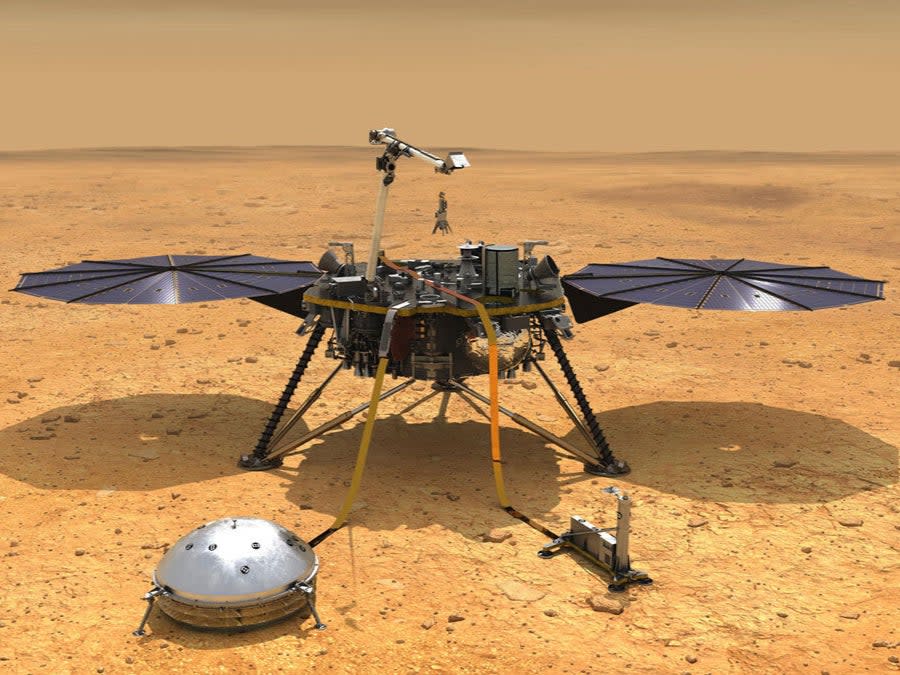Nasa’s Mars lander Insight is going into ‘emergency hibernation’ and might die, space agency says

Nasa’s InSight Mars lander is currently trying to endure the abrasive Martian environment, as it sits on the Red Planet conserving power as its solar panels get covered in dust.
InSight was designed to be powered by solar energy, gathered through dual two-meter panels. It was always expected that the panels would reduce their power output as time went on and dust landed on them, but would still have enough to last throughout the two-year mission.
Unfortunately, not all has gone to plan. Despite InSight landing in Elysium Planitia, a windswept area of Mars that gets lots of sunlight, none of the passing dust devils (funnel-like chimneys of hot air) have been close enough to clean the panels.
This means that InSight is only getting 27 per cent of the power that it otherwise would – shared between its scientific instruments, robotic arm, radio, and heaters.
To make matters worse, the windiest Martian season has just ended and it could be months before another cleaning event naturally occurs, and Mars is moving away from the Sun. Its already weak energy is getting weaker, and when InSight needs it most, and science operations have had to be put on hold until July 2021 when Mars is closer to the star.
“The amount of power available over the next few months will really be driven by the weather,” said InSight’s project manager, Chuck Scott of Nasa’s Jet Propulsion Laboratory in Southern California.
“As part of our extended-mission planning, we developed an operations strategy to keep InSight safe through the winter so that we can resume science operations as solar intensity increases.”
Nasa scientists now find themselves in the unenviable position of having to choose which instruments need to be switched off each day to conserve necessary power for the heaters and radio communication.
The craft’s weather monitoring will be off most days, meaning that Nasa will get less frequent updates about its environment, but Nasa hopes that even if the craft did go offline due to a lack of power that it would be able to reboot when the sunlight returns.
Before that, there is some recourse the agency can take to try and spark the lander into life. InSight will move its robotic arm, equipped with a camera, closer to the panels to better image the dust coating later this week.
The team will then pulse the motors which unfurl each panel, in an attempt to disturb the dust. Nasa is not hopeful this will work, however, but feels it is worth the attempt to keep the craft powered.
The risk of damage to the craft is pretty likely, InSight’s principal investigator commented to Insider. The cold weather on the Red Planet means that the delicate electronics could be damaged by the low temperatures – the lowest they will sink during the Martian year.
"Right now, our predictions, our projections are that we should be able to make it through the lowest-power point and come out the other side," Banerdt added. "We think we’re pretty well off, but Mars is unpredictable. We never know exactly what’s going to happen".
Read More
Greensill: ‘All decisions taken by the bank were made independently’, minister says
SpaceX launch: Elon Musk says Starship SN15 will fly next week

 Yahoo Finance
Yahoo Finance